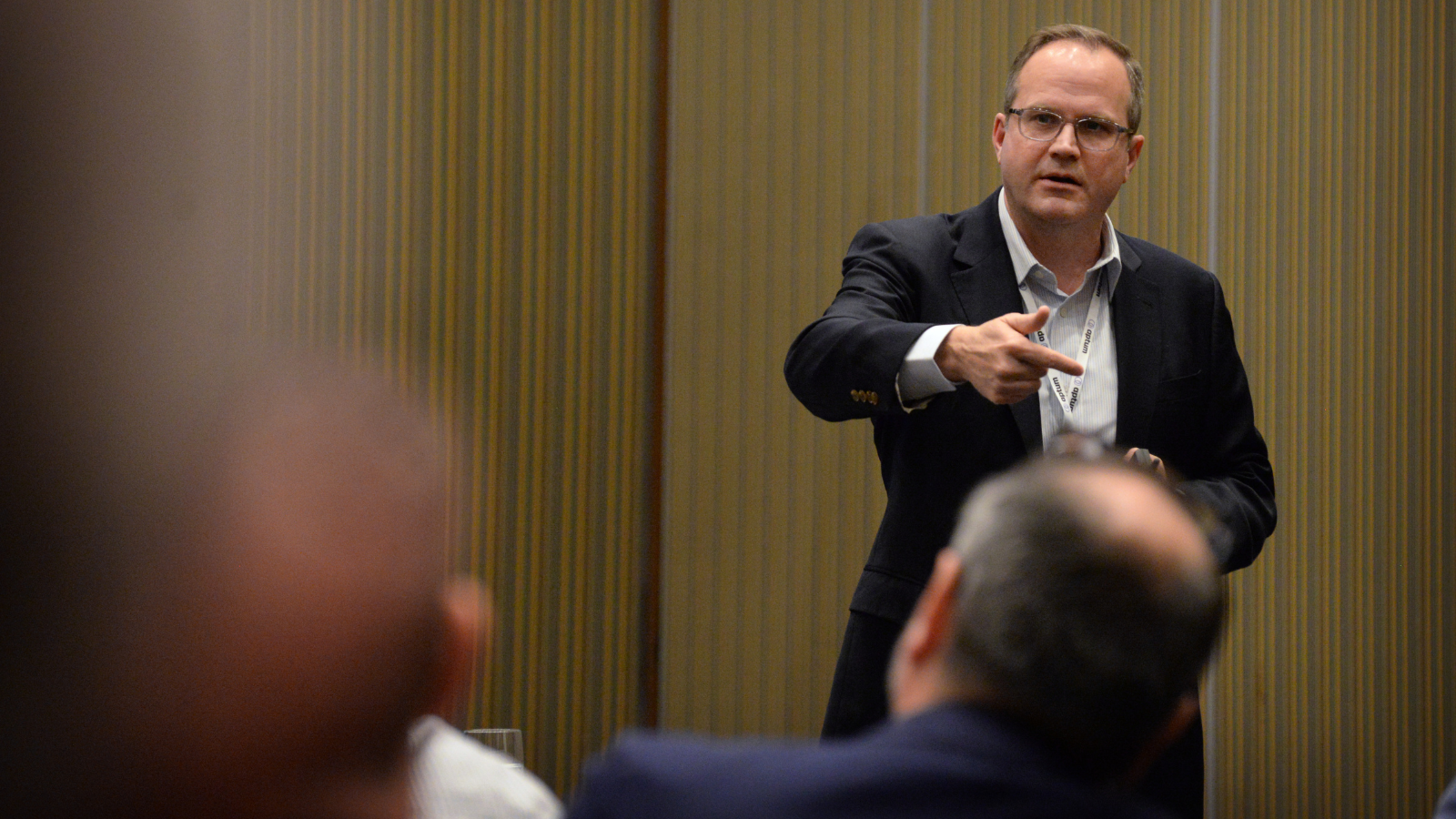Science
Technology Leaders Emphasize Ecosystems for Successful Adoption

Technology adoption hinges on the effectiveness of ecosystems, according to insights shared by Michael Lewis, Chief Technology Officer at Management Controls. Speaking at the CIO Association of Canada‘s Peer Forum in Ottawa, Lewis detailed how a single miscalculation can derail not just projects but entire adoption efforts in complex technology environments.
Lewis’s candid admission about a costly project failure served to illustrate a broader point about the intricacies of technology ecosystems. He emphasized that the success of technological solutions relies not solely on features but on the collective buy-in from owners, vendors, and end-users. This alignment is crucial, as it enables technology to address real-world challenges effectively.
Importance of Structured Feedback
During his presentation, Lewis highlighted the necessity of implementing structured feedback mechanisms, despite the potential for slowing down processes. He noted that his team employs a quarterly advisory board to mitigate bias and ground ideas in practical realities. This approach proved invaluable when a mobile timesheet tool, initially deemed robust by internal experts, failed during customer trials in remote locations.
“The advisory board’s rejection saved the company from rolling out a product that was doomed from the start,” Lewis explained. This disciplined approach is particularly important as nearly 40% of his employees have previously worked as customers. Their insights can be beneficial but may lead to overconfidence without external validation.
Learning from Failure
Lewis openly discussed the lessons learned from previous setbacks, including a nine-month evaluation of a reporting tool that ultimately had to be reversed when users preferred Power BI. He recalled the discomfort of admitting this mistake in a leadership meeting, stressing that acknowledging failures is vital for future success. “Sunk costs don’t justify keeping bad systems,” he stated, underscoring the importance of evidence in decision-making.
This experience reinforced the necessity for CIOs to be willing to pivot based on user feedback. Having an internal services group that utilized the software daily provided valuable insights that prompted a shift in direction.
Generative AI in Ecosystem Design
Lewis also discussed the role of generative AI in enhancing ecosystem functionality. He described a chatbot designed to offer real-time support to vendors and allow authorizers to query contract terms directly. This innovation addressed critical gaps, particularly in environments where procurement documents were often inaccessible.
Initially skeptical about the chatbot trend, Lewis recognized its potential after identifying specific business problems it could solve. The tool not only improved access to contract intelligence but also reduced friction from high turnover in contractor roles, where training is seldom retained from one employee to the next.
The chatbot earned recognition, including a CIO 100 award, demonstrating that generative AI can effectively address genuine pain points when aligned with business needs.
Reframing Contracting with AI
Further successes were noted in the team’s approach to traditional contracting methods. Lewis recounted a $600,000 lump-sum project initially estimated at 10,000 hours of work. However, upon review, only 4,900 hours had been logged, effectively doubling the hourly rate.
By utilizing generative AI to reconcile contract language and workforce data, Lewis’s team was able to provide transparency that procurement teams previously lacked. “We’ve figured out that your blended rate should be $61 an hour, not $122.45,” he explained, highlighting the significant insights gained from their analysis.
This transparency empowered both project owners and vendors, facilitating better-informed negotiations and compliance discussions regarding fatigue rules and crew requirements.
Leadership in Complex Ecosystems
Lewis’s presentation reinforced the notion that ecosystems amplify both risks and rewards in technology adoption. He urged CIOs to cultivate processes that identify friction points early, embrace failure when it occurs, and ground new technologies in real-world challenges faced by users.
“When you have an ecosystem-type product where it takes multiple user communities, the importance of these items gets amplified,” Lewis remarked. The takeaway for leaders is clear: establishing guardrails, such as checkpoints and candid evaluations, protects against wasted efforts and fosters trust within the system.
Ecosystems raise the stakes for every decision. A feature that benefits one group but alienates another can lead to significant issues. Leaders who can pivot quickly from mistakes not only save their teams from future frustration but also build credibility through evidence-based decision-making.
In summary, while guardrails may seem cumbersome, they are essential for survival in environments where the cost of failure can escalate rapidly. As technology ecosystems evolve, the lessons shared by Lewis will serve as a guide for future leaders navigating complex landscapes.
-

 Lifestyle1 week ago
Lifestyle1 week agoChampions Crowned in Local Golf and Baseball Tournaments
-

 Science2 weeks ago
Science2 weeks agoMicrosoft Confirms U.S. Law Overrules Canadian Data Sovereignty
-

 Education1 week ago
Education1 week agoRed River College Launches New Programs to Address Industry Needs
-

 Technology2 weeks ago
Technology2 weeks agoDragon Ball: Sparking! Zero Launching on Switch and Switch 2 This November
-

 Technology2 weeks ago
Technology2 weeks agoGoogle Pixel 10 Pro Fold Specs Unveiled Ahead of Launch
-

 Technology2 weeks ago
Technology2 weeks agoWorld of Warcraft Players Buzz Over 19-Quest Bee Challenge
-

 Science2 weeks ago
Science2 weeks agoChina’s Wukong Spacesuit Sets New Standard for AI in Space
-

 Science2 weeks ago
Science2 weeks agoXi Labs Innovates with New AI Operating System Set for 2025 Launch
-

 Science2 weeks ago
Science2 weeks agoTech Innovator Amandipp Singh Transforms Hiring for Disabled
-

 Technology2 weeks ago
Technology2 weeks agoNew IDR01 Smart Ring Offers Advanced Sports Tracking for $169
-

 Health2 weeks ago
Health2 weeks agoRideau LRT Station Closed Following Fatal Cardiac Incident
-

 Technology2 weeks ago
Technology2 weeks agoHumanoid Robots Compete in Hilarious Debut Games in Beijing
-

 Health2 weeks ago
Health2 weeks agoB.C. Review Urges Changes in Rare-Disease Drug Funding System
-

 Technology2 weeks ago
Technology2 weeks agoFuture Entertainment Launches DDoD with Gameplay Trailer Showcase
-

 Technology2 weeks ago
Technology2 weeks agoGlobal Launch of Ragnarok M: Classic Set for September 3, 2025
-

 Science2 weeks ago
Science2 weeks agoNew Precision Approach to Treating Depression Tailors Care to Patients
-

 Technology2 weeks ago
Technology2 weeks agoInnovative 140W GaN Travel Adapter Combines Power and Convenience
-

 Business2 weeks ago
Business2 weeks agoNew Estimates Reveal ChatGPT-5 Energy Use Could Soar
-

 Lifestyle2 weeks ago
Lifestyle2 weeks agoVancouver’s Mini Mini Market Showcases Young Creatives
-

 Health2 weeks ago
Health2 weeks agoGiant Boba and Unique Treats Take Center Stage at Ottawa’s Newest Bubble Tea Shop
-

 Technology2 weeks ago
Technology2 weeks agoDiscover the Relaxing Charm of Tiny Bookshop: A Cozy Gaming Escape
-

 Science2 weeks ago
Science2 weeks agoInfrastructure Overhaul Drives AI Integration at JPMorgan Chase
-

 Top Stories2 weeks ago
Top Stories2 weeks agoSurrey Ends Horse Racing at Fraser Downs for Major Redevelopment
-

 Technology2 weeks ago
Technology2 weeks agoBorderlands 4 Promises Massive Changes with 30 Billion Guns










